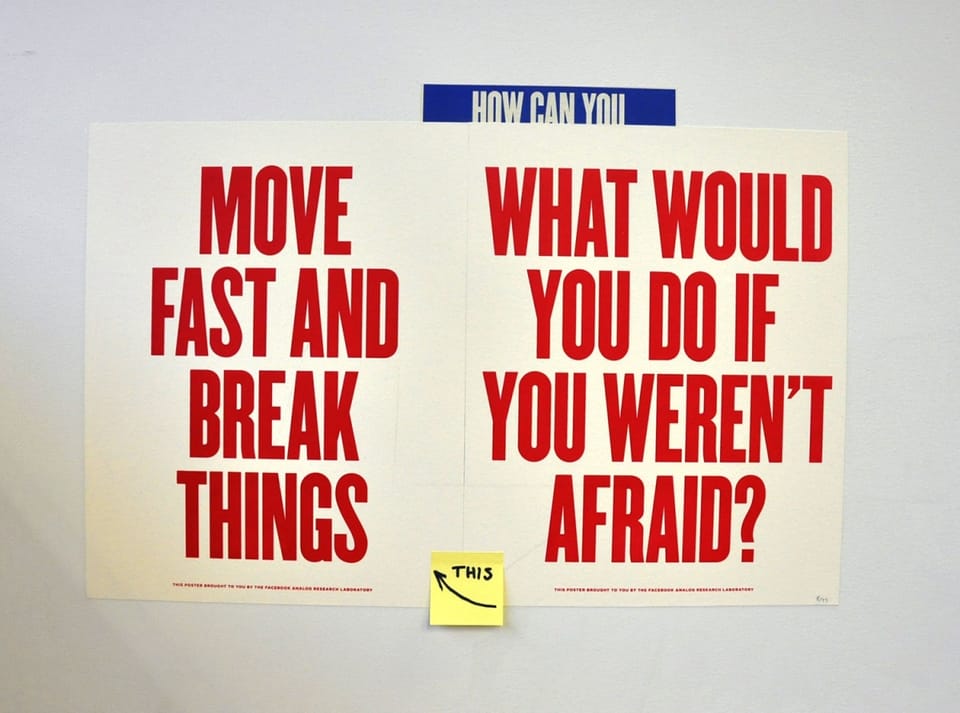Move fast and break things

For many companies, it’s the end of the financial year, so that means performance reviews, and in most organisations, that involves comparing how people have acted against the company’s values, so values are on a lot of people’s minds at the moment.
Whenever I think about company values, I’m inevitably brought back to the early 2010’s values at Facebook. There was many, but I think the one most people remember, inside and outside the company was “Move Fast and Break Things”. It’s gotten a lot of criticism over the years, with the common interpretation that it engendered a culture of reckless disregard for users.
But that’s not how I remember it, or how I think most people working there lived it.
The push and pull of moving fast
Think about moving fast. It’s a sense of urgency. It’s acting like your competitor is constantly nipping at your heels. Mark Zuckerberg used to constantly talk about how if we didn’t invent the next Facebook, then someone else would. The company made this feeling even more real when we moved our HQ into the old Sun Microsystems campus, and instead of purging the buildings of reference to the old company, we left the logos etc everywhere. It was a constant reminder that we weren’t the first company to occupy this space, and we weren’t going to be the last.

Anyway, I digress. The point of move fast and break things was sometimes moving faster was the right thing to do. But the faster you moved, the more likely you were to make a mistake and break something. You can clearly see the push and pull here. The value was a trade-off between speed and stability. Everyone wants a stable system, but everyone also wants new functionality, and they want it yesterday.
The value was a reminder that we were willing to sacrifice some stability for that speed of execution. That didn’t mean you shipped things regardless of consequences, or you were cavalier about quality. It was that given a 50/50 chance of something breaking, we were willing to accept that risk if it meant we could move faster. That was the inherent trade-off.
Values should create trade-offs
In order to be meaningful, values should be difficult trade-offs. They need to offer a push and pull between two tempting situations. Either direction should have its own appeal. If it doesn’t, then it’s not a value, it’s just a bland statement of fact. After all, where’s the tension in “We respect our customers” or “We value our employees”?
So when you find yourself reviewing your company values, ask yourself what’s the trade-off? If you’re struggling to find situations where the opposite of the value is tempting, then maybe what your team values isn’t that big an ask to uphold, and it should be, otherwise why bother reinforcing it.
